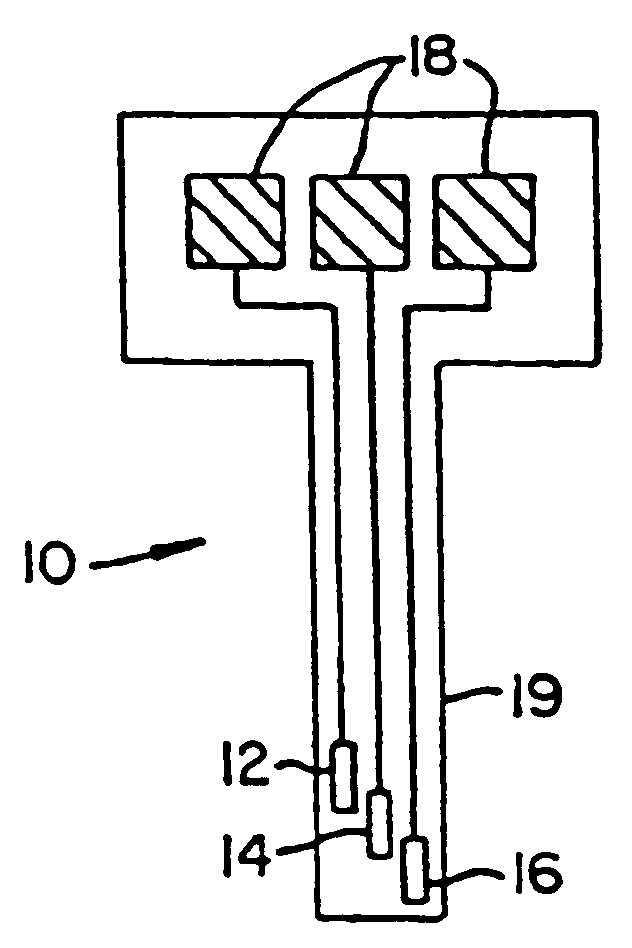Methods and materials for stabilizing analyte sensors
a technology of analyte sensors and materials, applied in medical preparations, diagnostics, medical science, etc., can solve the problems of affecting sensor performance, introducing noise, and deposition of protein or fouling on the surface of materials or devices, so as to enhance sensor performance and stability, and reduce noise
- Summary
- Abstract
- Description
- Claims
- Application Information
AI Technical Summary
Benefits of technology
Problems solved by technology
Method used
Image
Examples
Embodiment Construction
[0019]Embodiments of the invention described herein are based on the discovery that the performance of a sensor, such as a sensor implanted in biological tissue, can be improved by providing a buffer zone around the sensor at the interface with the tissue or fluid to be sampled. Without being bound by a specific scientific theory, it is believed that the buffer zone generated by the sensor systems recited herein stabilizes the reaction conditions by inhibiting alterations in the reaction conditions at the 3-D interface where the analyte reacts with the sensor. Such a buffer zone can be created by placing the sensor inside a tube or cannula, wherein the cannula extends beyond the length of the sensor. One or more apertures in the cannula provide access to the sensor. The configuration of the sensor can be further modified to enhance sensor performance and to adapt the sensor for a particular use.
[0020]All scientific and technical terms used in this application have meanings commonly ...
PUM
 Login to View More
Login to View More Abstract
Description
Claims
Application Information
 Login to View More
Login to View More - R&D
- Intellectual Property
- Life Sciences
- Materials
- Tech Scout
- Unparalleled Data Quality
- Higher Quality Content
- 60% Fewer Hallucinations
Browse by: Latest US Patents, China's latest patents, Technical Efficacy Thesaurus, Application Domain, Technology Topic, Popular Technical Reports.
© 2025 PatSnap. All rights reserved.Legal|Privacy policy|Modern Slavery Act Transparency Statement|Sitemap|About US| Contact US: help@patsnap.com



